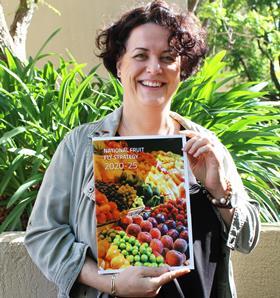
The path towards a more coordinated and sustainable fruit fly management system to protect the future productivity and profitability of Australia’s horticulture sector is now clearer with the release of the 2020-25 National Fruit Fly Strategy
The strategy was launched at a meeting of the National Fruit Fly Council (NFFC). Lloyd Klumpp, chair of the NFFC, said the strategy provides a framework for governments, industry and research funders to advance fruit fly management in Australia.
“It is a blueprint for national cooperation as we seek to both manage our existing pest fruit fly species, Queensland fruit fly and Mediterranean fruit fly, and prevent exotic species like Oriental fruit fly establishing in Australia,” said Kumpp.
Steve Burdette, technical manager at Nutrano and member of the NFFC, said a focus of the strategy is to maintain and advance access to domestic and international markets for fruit fly affected industries.
“We have to work together to tackle fruit fly. They are a key barrier to market access for our fruit fly affected industries, which make up about half of Australia’s A$13bn horticulture sector.”
Sarah Corcoran (pictured), chief executive of Plant Health Australia (PHA), explained the new strategy builds on a draft version released by PHA in 2008 and is the result of a collaborative effort by Australia’s horticultural industries, state governments, the Australian Government, Hort Innovation and various research institutions.
“PHA brought together the contributions of these organisations into a unified national strategy which can meet the needs of the diverse industries and regions impacted by fruit fly,” said Corcoran.
The actions required to meet these needs have been captured under eight different, yet interdependent, priority areas: market access; management of established fruit fly; prevention, preparedness and response; research; surveillance; diagnostics; communication and engagement; and cooperation.
The NFFC is tasked with overseeing the implementation of the 2020-25 National Fruit Fly Strategy and will be developing annual implementation plans to identify and monitor key activities under the strategy.
“While it is the Council which will oversee the implementation of the strategy, our real strength lies in the contribution that every individual and every organisation makes to combating fruit fly,” added Klumpp.
“Effective management of fruit flies relies on cooperation at all levels of government, and between industry bodies, research institutions, regional groups, growers, and community and home gardeners.
“To this end, I encourage you to consider using this strategic framework when planning and executing fruit fly management,” he said.
Australia’s federal minister for Agriculture, Drought and Emergency Management David Littleproud welcomed the announcement, adding: “Fruit flies cost Australia’s horticulture sector around A$300m a year and can have a major impact on our fruit and vegetable growers.
“The National Fruit Fly Strategy 2020-25 provides a blueprint for national cooperation and will enhance the effectiveness of management activities to support landholders and the community to manage fruit flies better into the future.”



